Introduction
Seow (2014) is articulate about the fact that “running a café is no piece of cake.” The last five years have been characterized by a boom in the café business, with more than 350 new cafes, snack bars, and coffee houses opening up each year in Singapore. Unfortunately, around 50% of these businesses do not thrive, and they end up being shut due to what Seow highlights as “poor planning, lack of experience, poor selection of business location, and poor personnel management” (Seow, 2014, para. 1). Therefore, in order to find out what has been the reason for such a high rate of business failure, I engaged in a mixed methods research design proposal to investigate this problem.
I chose Refuel Café as my study location. Refuel Café is a new café that is hardly a year old. In congruence with Seow’s opinion, Refuel Café is located in a hidden location, and it is apparent that the café is not readily visible and accessible to passers-by. Hence, the rate of walk-ins is probably very low. In addition, there have been some complaints about the competency of the staff and the quality of food. These are red flags, which, if not addressed in time, can take a toll on the success of Refuel Café. I, therefore, aim at identifying factors that would prevent Refuel Café from achieving success and subsequently identify potential strategies that could be adopted to enable Refuel Café attain success through this visual research design proposal.
Problem Identification and Research Questions
The Refuel Café (Blk 744 Bedok Reservoir Road, #01-3029, Singapore 470744) is located along Bedok Reservoir Road in the eastern area of Singapore (Figure 1 and 2).
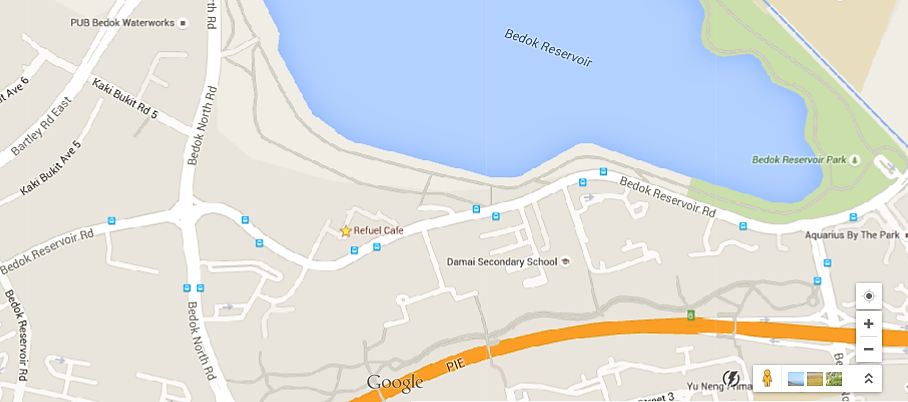
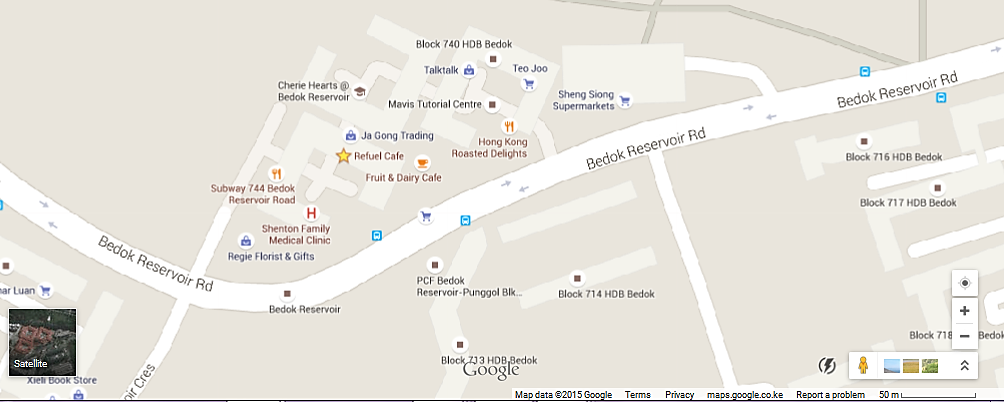
Refuel Cafe is nestled within Bedok Reservoir neighborhood and faces great competition from the WaWaWa in Bedok Reservoir Park (Figure 3). Refuel Café is a hub for brunch while the Wawawa’s positioning is its German delicacies.
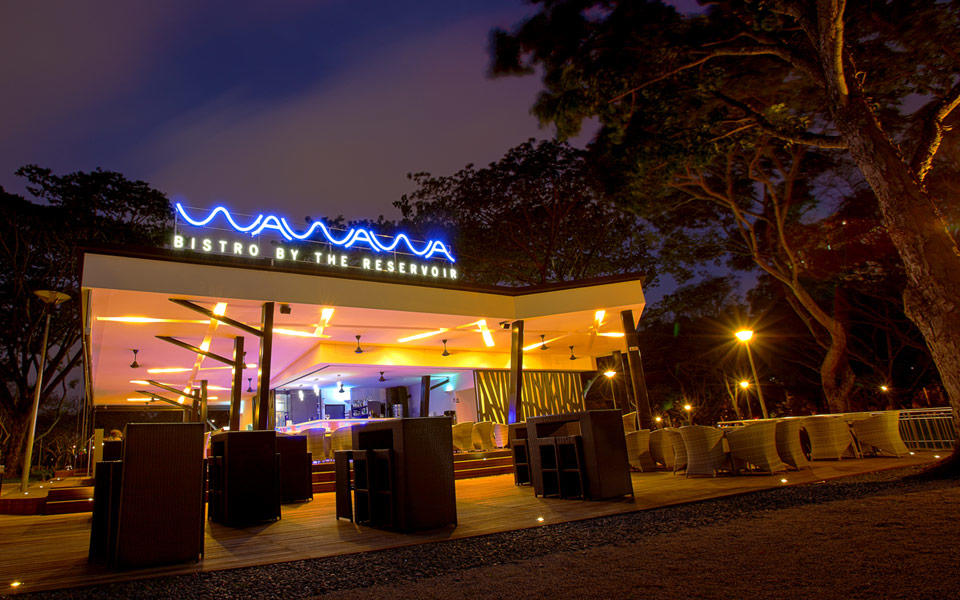
Refuel Café is not visible enough because it is blocked by surrounding flats (Figure 4). Besides WaWaWa, it also faces added competition from the McDonalds and the Subway that joined from March to April 2015 (Figure 5 and 6). The food at Refuel is not comparable to that at the renowned McDonalds and Subway Cafes. Therefore, it is necessary for Refuel to position its products in a unique way, despite the tough competition it currently faces.
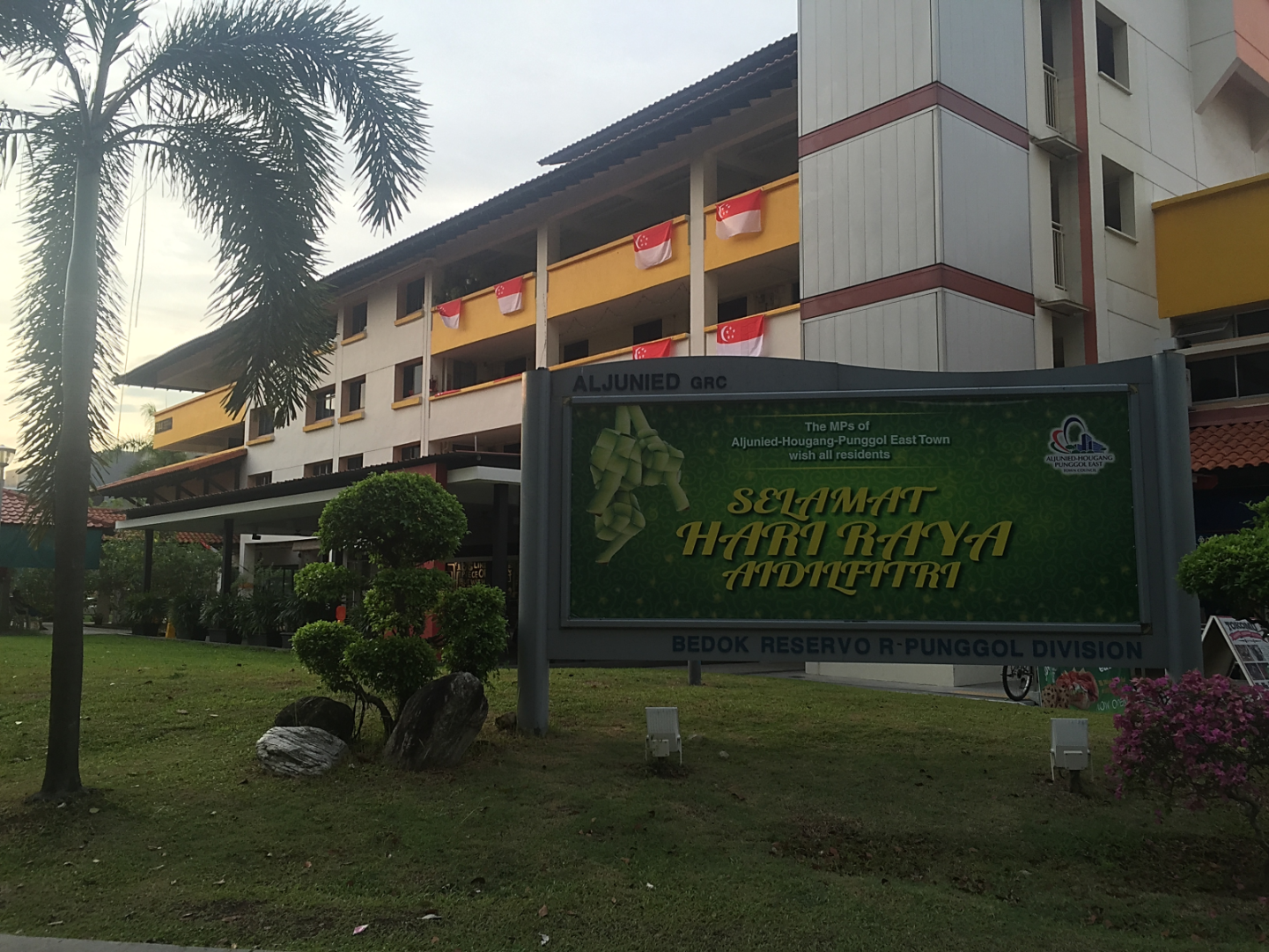
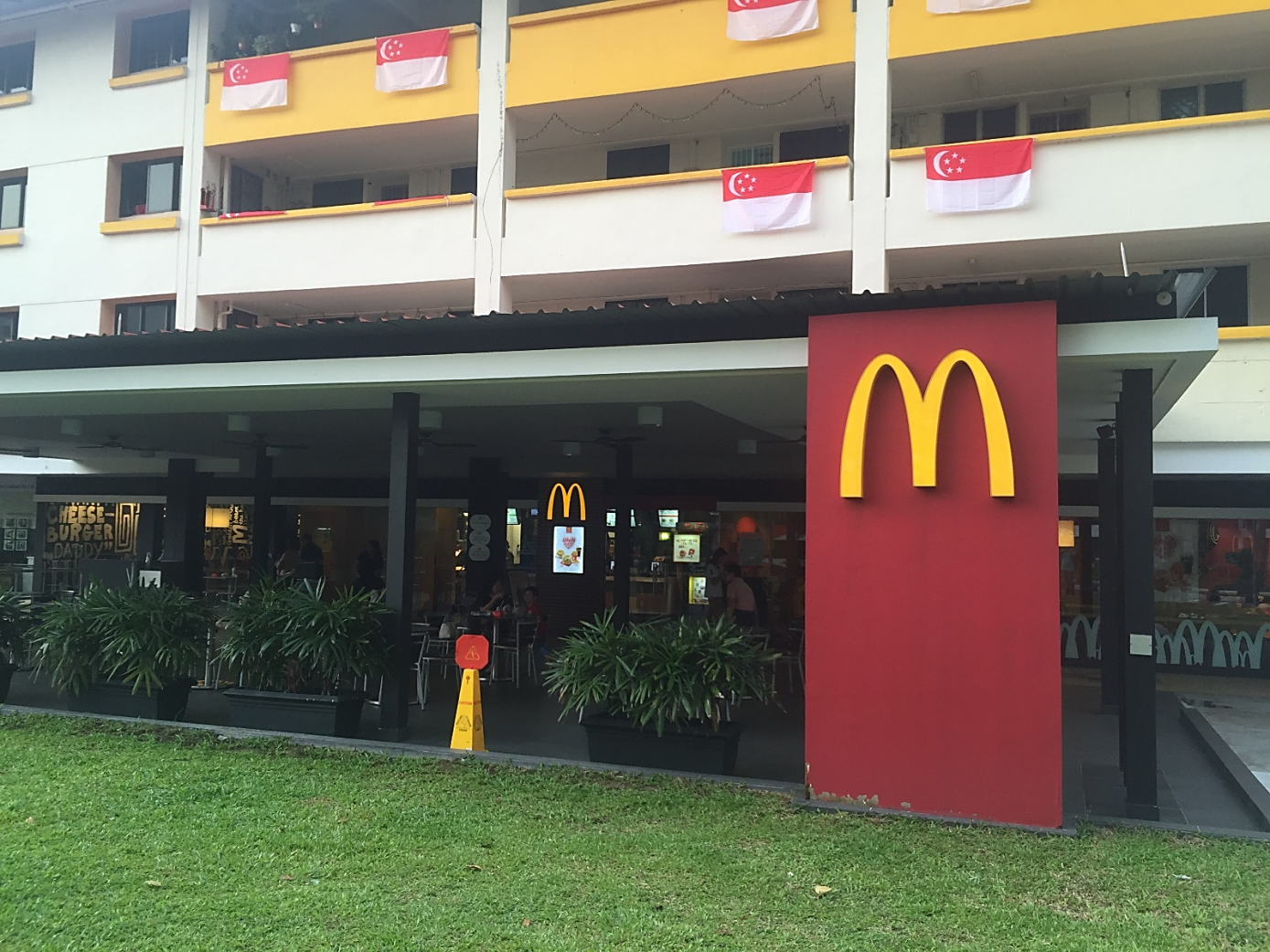

Poor location might be a reason for the low numbers of customers at Refuel Cafe; however, Refuel can focus on other elements that will increase its popularity and retention of customers. Unfortunately, Refuel Café does not offer discounts like the WaWaWa, which offers 20% discount on alcoholic drinks from 5-7 pm, except on public holidays and eves of these public holidays (WaWaWa Bistro by the Reservoir, 2015). Also, Refuel is open for only 6 days a week: closed on Tuesdays (Figure 7).
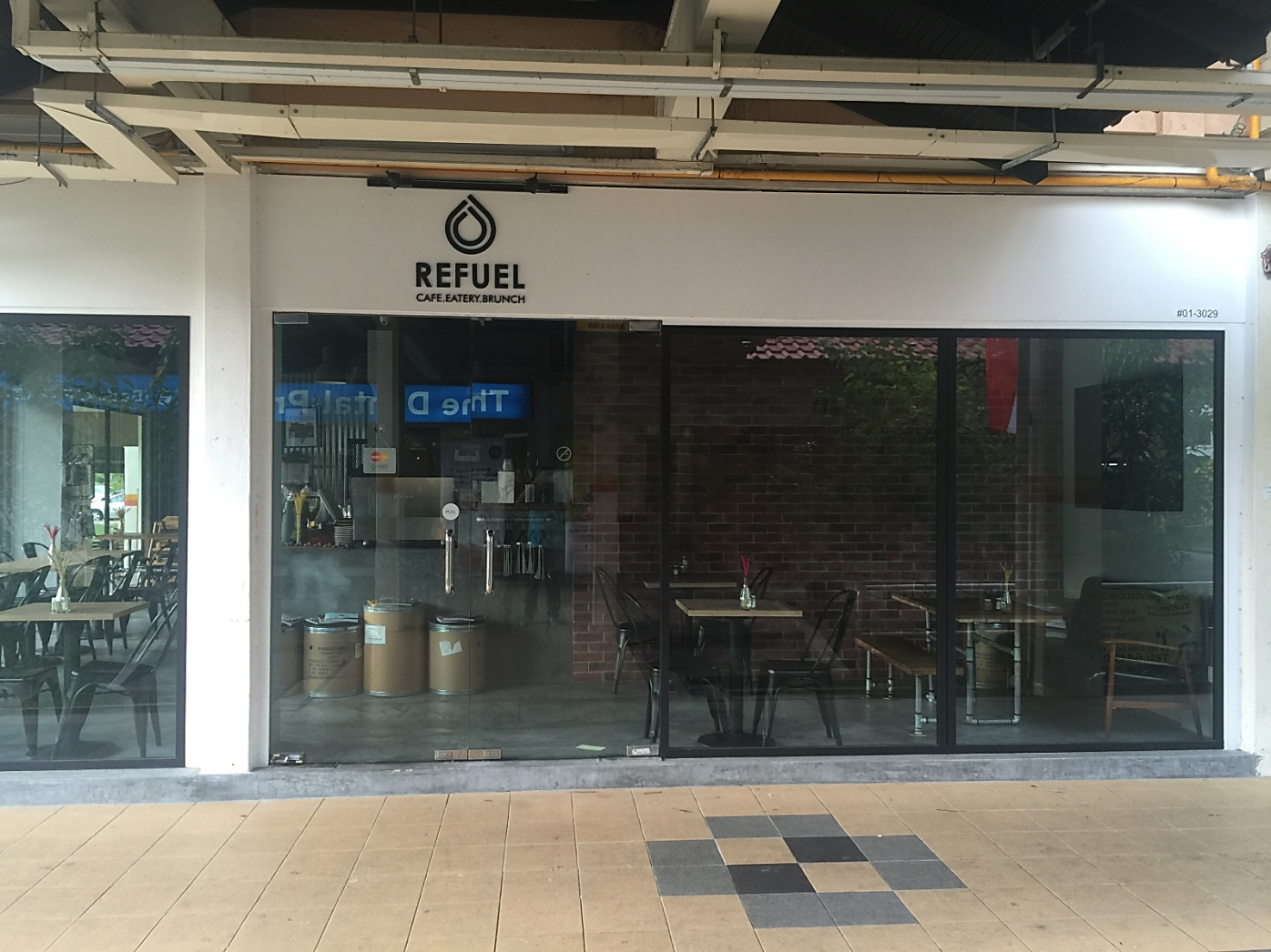
Refuel Cafe operates for eleven hours during the days it is opened. But, it is not known whether extending the hours of operation or including Tuesday as a working day would enlarge the customer base. In addition, the café lacks the capacity (estimated about 20 seats) to host many clients. Sometimes the cafe is full and overcrowding may push some customers away. Therefore, the cafe should consider adding more space and seats (Figures 8 and 9).
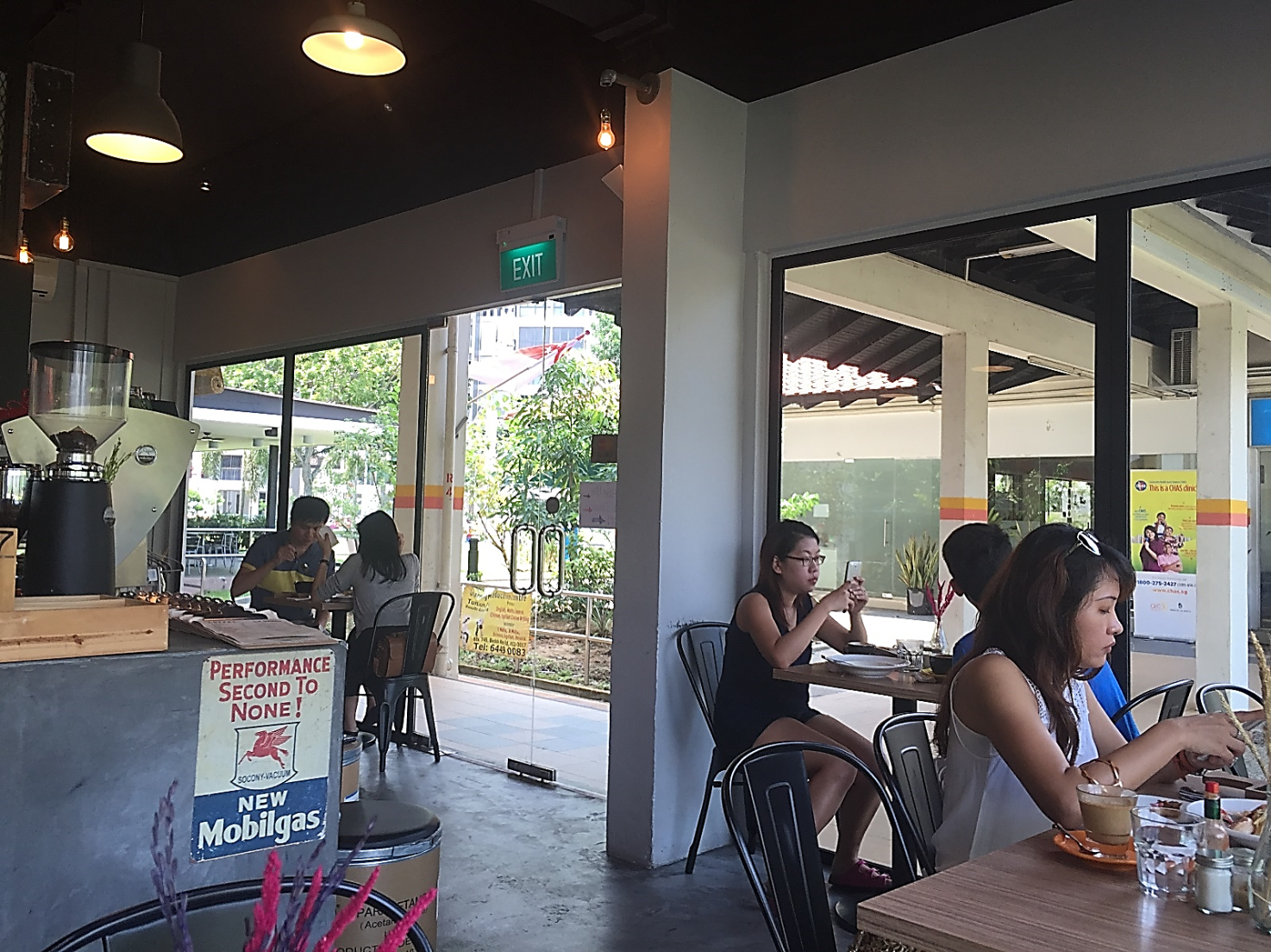
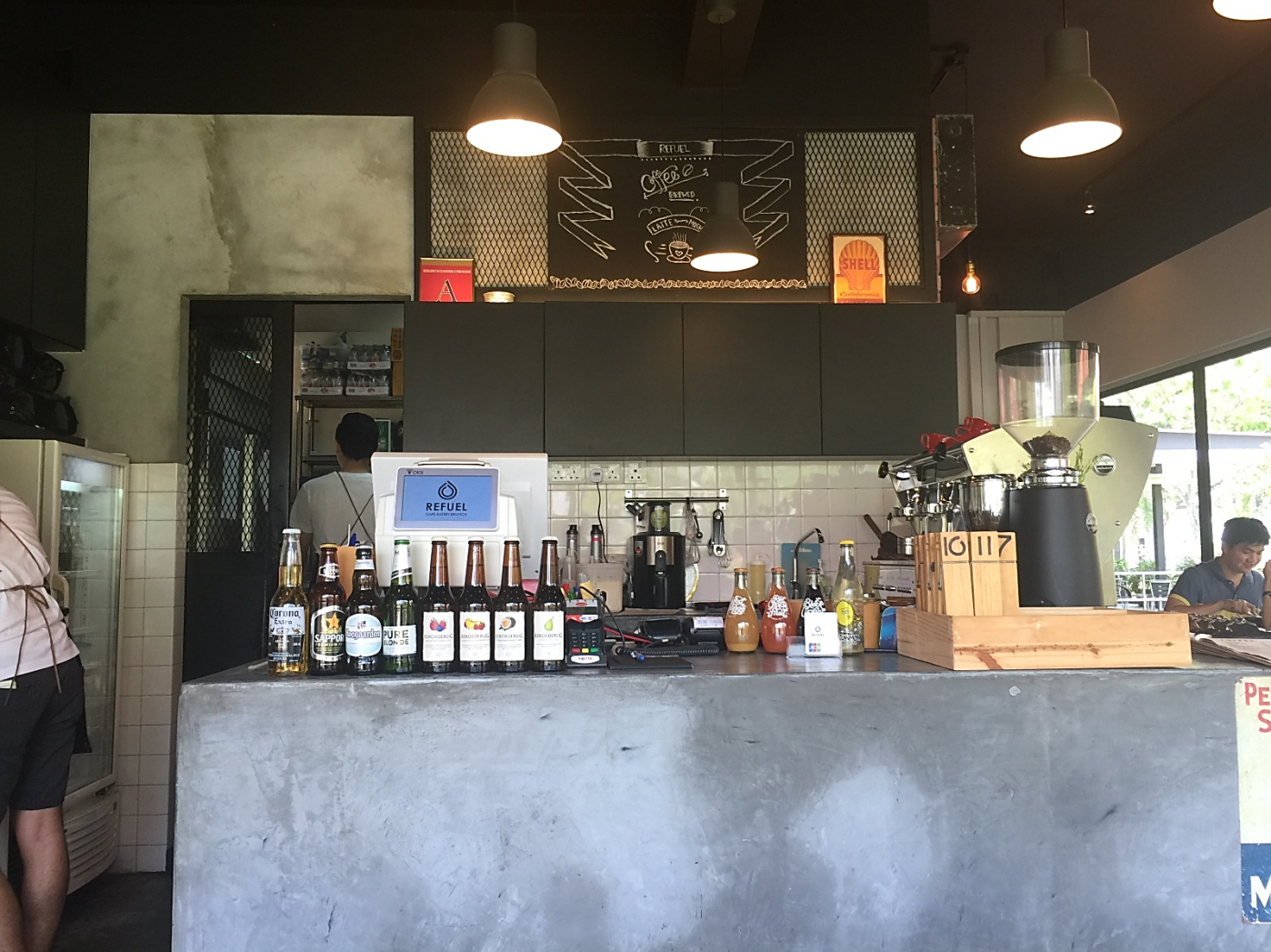
Another thing is that Refuel Café is characterized by inconsistency in service quality because there have been some complaints about the quality of service by some staffs. In a recent complaint that has been viral on the Internet, a customer complains about finding a piece of hair in her food and hostility of the staff. As a result, it is important for the management to establish the validity of such complaints because these can take a toll on the business. Implementing the research design will help to get conclusive evidence and advise the person(s) in charge on appropriate strategies for implementation to ensure that all the staffs are friendly and responsive to the customers in the best way possible. It is, therefore, imperative to investigate how the factors mentioned above influence the number of clients walking into Refuel Café.
Various factors are involved in the successful running of any café. Unfortunately, there is minuscule research on the determinants of successful cafes because most researches focus on customer satisfaction. It is a high time, research focused on other determinants that have not been looked into at great depths, for example, locality, ambience, products offered, and incentives offered. Baskerville (2012) states that successful coffee shops rely on hard work, extensive experience, or luck or a combination of all three factors. According to Baskerville (2012), a prominent and highly worthy location is not the guarantee to the successful running of a café in comparison to service quality. However, Griffin (2015) states that the business area is an important element that determines traffic patterns and accessibility. Research on these factors is scarce; hence, this business will investigate the influence of such push and pull factors that determine successful business operations.
Whereas different views about Refuel’s cafe are viral on the internet, it is necessary to obtain conclusive evidence about the state of Refuel Café. Hence, the purpose of this study, which is to determine the factors that influence the number of customers visiting the café, will shed light on the factors that promote good business, and those that do not. Investigating these factors is important to enable the café design appropriate strategies to help it increase the customer numbers and achieve a high customer retention rate. Subsequently, this will lead to increased sales and associated profits.
The study sought to address the following research questions:
- What are the socio-demographic characteristics of clients visiting Refuel Café?
- What is the customer satisfaction score of services offered at Refuel Café?
- What are your thoughts on the location of Refuel Café?
- What are the clients’ perceptions regarding the ambience?
- What is the satisfaction score of food served at the café?
- What is the influence of incentives on the café’s ability to retain clients?
- What is the influence of locality on the accessibility to the café by clients?
- What is the product positioning of Refuel Café?
- What marketing strategies influence customer attraction and retention?
- How reliable are the opening hours for clients?
Since it is difficult to change the locality of the café, it is important to improve on various facets, within the cafe, deemed important to customers. In addition to product positioning mentioned above, the café needs to create a strong marketing strategy, work on its interior space and exemplify the quality of services delivered. The café should aim at utilizing other social media to increase public awareness. In addition, the cafe should develop a user-friendly website to enhance communication with its clients on future improvements because currently it has a Facebook site that serves as its “website”. Developing its own website will enable Refuel Cafe to highlight all the products and services it offers, as well as daily changes on the menu and any available special menus. In so doing, clients will be amazed at the new developments. Also, it will help the cafe to clear the current negative notion that customers have of its fixed menu that lacks any special offer(s) (Figure 10).
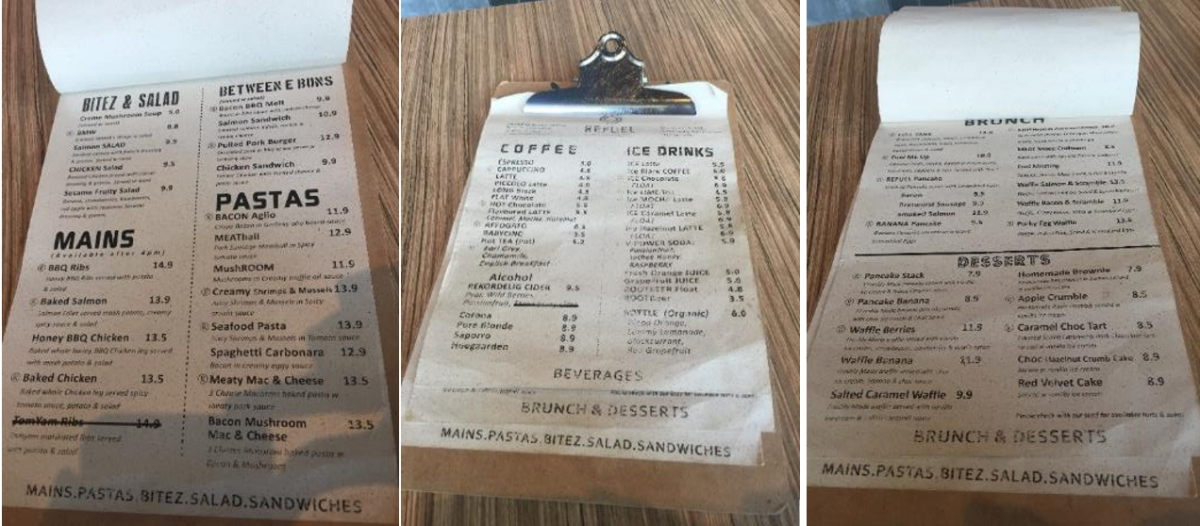
Research Design
In relation to the problem identified in the section above, this research aimed at giving insight into the factors that support, and those which do not support, the growth of the café’s customer base. The research design used to answer the formulated research questions was a mixed method research design that involved the collection of both qualitative and quantitative data to determine the unsupportive factors for high customer numbers into the cafe. The table below gives an overview of the entire research process:
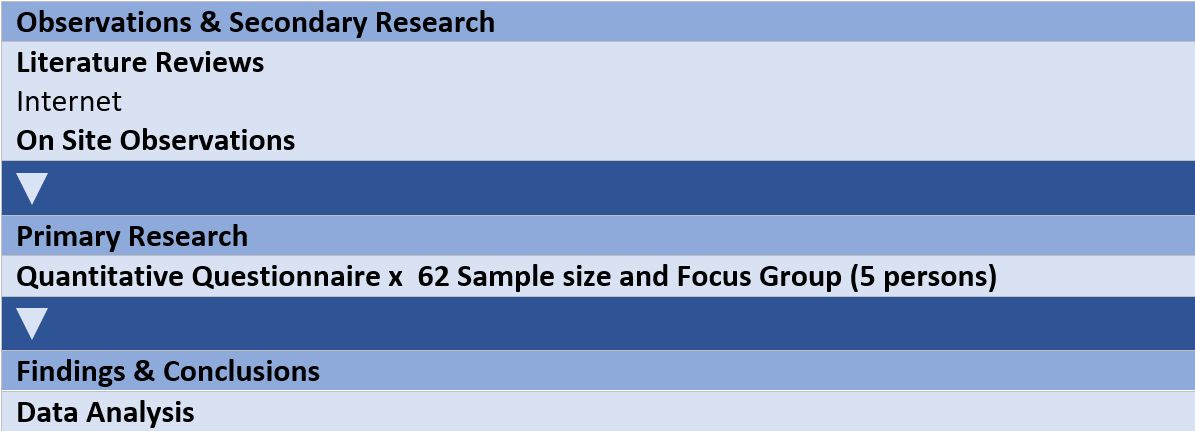
An offline questionnaire was administered to collect quantitative data and focus group discussions were used to obtain qualitative data and augment the quantitative data. The insights gathered from the research process focused on locality, space within the cafe, product positioning of the café, service quality based on customer satisfaction scores, incentives, and marketing strategies. Insights obtained from this study were meant to help in deepening the relations between Refuel Café and customers while focusing on the most cost-effective strategies to enhance popularity and customer loyalty.
Among several websites containing reviews of Refuel Café, it was not obvious that the café, irrespective of being deemed a neighbourhood café, serves good food. However, it was expected that there was a need to work on the customer service right from the top management to the lowest cadre staff (HungryGoWhere, 2015). Since its locality is hidden, Refuel Cafe creates a peaceful and tranquil environment preferred by many business people. Therefore, enhancing the ambience by giving it a touch of nature and maintaining the soothing music would be beneficial to the cafe. It was deemed imperative to expand the café because it became difficult to have a table just for oneself.
In accordance with Alcser, Antoun, Bowers, Clemens, & Lien (2011), it is important to note that only necessary information intended for the purpose of the research was collected. The research process targeted customers visiting the café. During the research process, I was assisted by a sign language interpreter. The interpreter enabled me to understand information with more clarity due to my hearing impairment that would have distorted my reception of information from customers. Otherwise, I was solely involved in the recruitment and collection of data from the customers as they entered the café. After a brief introduction, any client above the age of 18 years who voluntarily accepted to participate was asked to choose the mode of answering questions: email or face-to-face.
In the event that a client chose email, they were also notified of a subsequent focus group discussion that would take place at a place and a time of their convenience. In such a case, some contact details were taken for the sole purpose of organizing the focus group discussion. Regarding target audience, customers above 18 years old were selected because it was assumed that they can make independent decisions regarding their preferred choice of cafés. Clients visiting the café for the first time were excluded because of their lack of experience with the café’s staff and services. The customers were approached before they could make an order. A sample size was determined while factoring in the following three elements:
- Margin of error
- Confidence interval
- Standard deviation in relation to the number of customers who visited the café within a week.
The formula used to calculate the sample size was obtained from Boston University School of Public Health (2013):

Therefore 1.96 x 20= 61.4656≈ 62 Where z (1.96) is the margin of error, δ (20)
5is standard deviation and E (5) is the confidence interval
I chose this formula because I lacked an absolute population size. I used the average number of customers visiting the café within one week and using this size, I divided it by the sample size to determine a sampling interval. Using the sample interval of 6, I used randomization to select the first customer and recruited every subsequent sixth customer until I obtained my sample size of 62. Using a scientific method to determine sample size and probability sampling to recruit participants helped me to reduce research bias. The questionnaire was used to collect data on the factors under study. The Focus Group Discussion Guide (FGDG) was used to obtain qualitative data. My interpreter facilitated the focus groups.
In order to test the validity of the questionnaire and focus group discussion guide used, I used the test-retest reliability method. I selected another restaurant in a neighbourhood area and administered the questionnaire two times over a period of one week. I recruited ten customers for each test and the answers obtained from both tests were used to obtain a correlation coefficient. The reliability of the questionnaire and interview schedule was affirmed by a Pearson’s (r) coefficient. I considered a r of => 0.81 as the cutoff to mean that the questionnaire was highly reliable (Vaz, Falkmer, Passmore, Parsons, & Andreou, 2013). Construct validity was used to ensure that the questionnaire was valid. The research process timeline was around 33 days as indicated in Table 2 below.
Research Process Timeline
Implementation Strategy
I used method triangulation, indicated in the figure below, to minimize bias by comparing the data I collected using different research methods and tools.
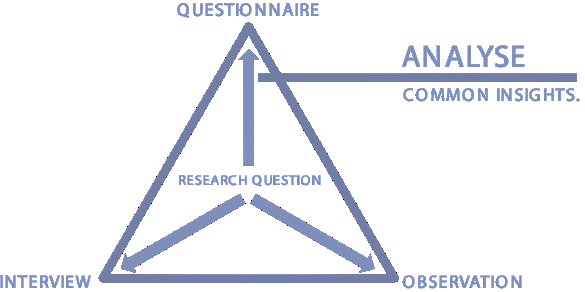
In reference to table 1, I started my observations with a few visits to Refuel café after I gathered data based on secondary research such as literature reviews over the Internet. Then questionnaires were used to facilitate one-on-one interviews with the customers and to collect quantitative data. The same questionnaires were given to 62 selected customers. Focus groups were used to collect qualitative data. Three focus group discussions (5 persons) were conducted until saturation of data was achieved. All the data were received through approved consent and personal information was treated with high confidentiality and was not shared. Alongside filling in the questionnaire, while using the help of my interpreter, I took interview notes to help in comparing the responses to the feelings and attitudes of the customers. Only completely filled in questionnaires were used; hence, the response rate was determined and compared with the recommended response rates.
Using the help of the interpreter, I transcribed the recordings. Subsequently, different transcriptions from different sessions were compared, and the themes with a high frequency were triangulated with quantitative data. In addition, they were used to explain the quantitative data.
Research Findings and Conclusion
A majority of the respondents were in their thirties. In addition, a large proportion of the studied population consisted of males (see the figures below).
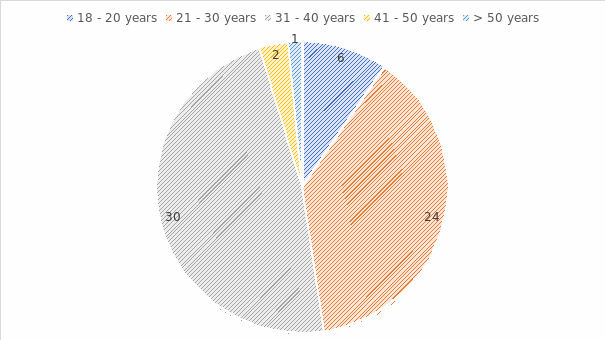
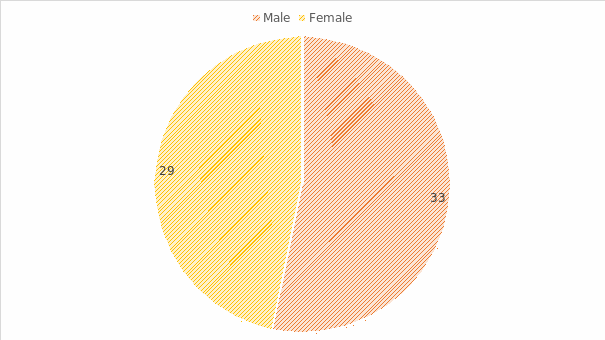
Generally, the customers did not mind about the location as shown in figure 14 below. However, for those customers that lived in another part of the country, they felt that the café was so hard to find (figure 15).
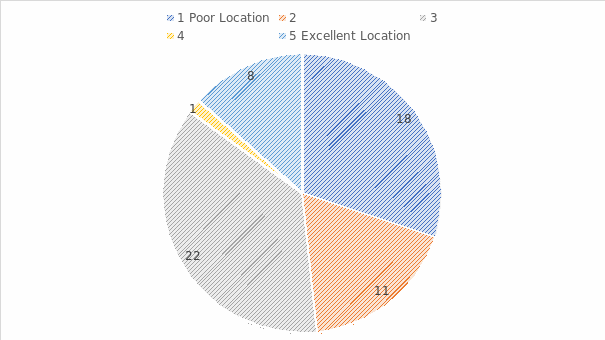
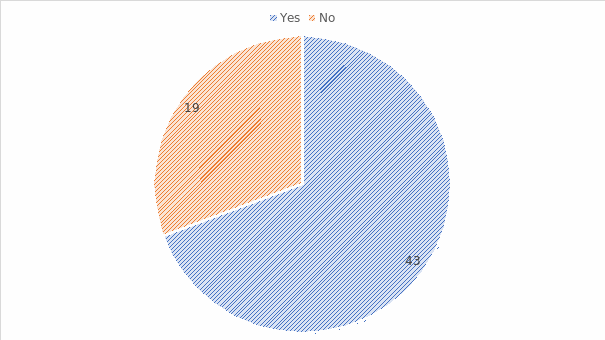
Cafe is blocked and some surrounding popular cafes, for example, the McDonalds, overshadowed it. In addition, the café has not made efforts to provide signage or directions (see chart 16 below). Hence, most customers felt that the café should provide signage.
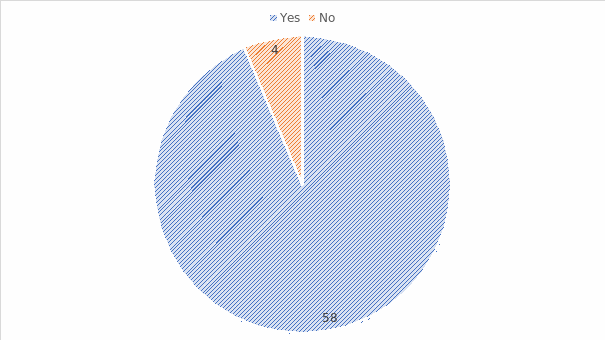
Most customers who lived nearby did not mind about the location (see figure 15 above); however, they were of the opinion that Refuel would be able to attract a large customer base if it provided exceptional customer care services. In addition, they could consider having special offers like the terrific Tuesday for pizzas; the café can consider having a terrific day for certain dishes.
Most customers considered the staff’s uniform to be unprofessional (Figure 17 below).
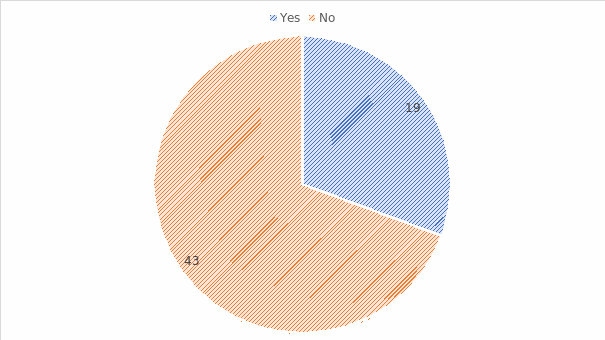
Most customers were complacent to the services and products offered because they were relatively cheap compared to the well-established cafes nearby. However, the customers reiterated that the slightly lower prices ought not to be a ticket for poor service for Refuel. Otherwise, customers would prefer paying more for high quality. The charts below indicate that around 50% of the customers were satisfied with their experience at Refuel café, and believed Refuel café met their expectations.
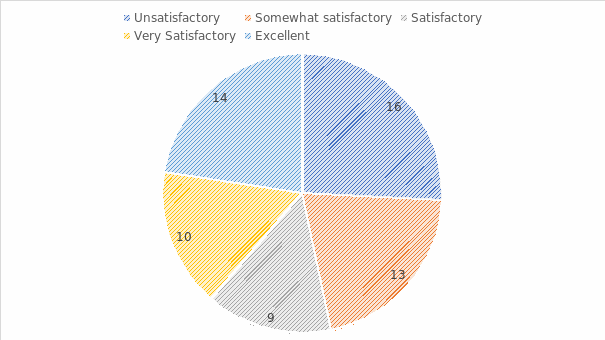
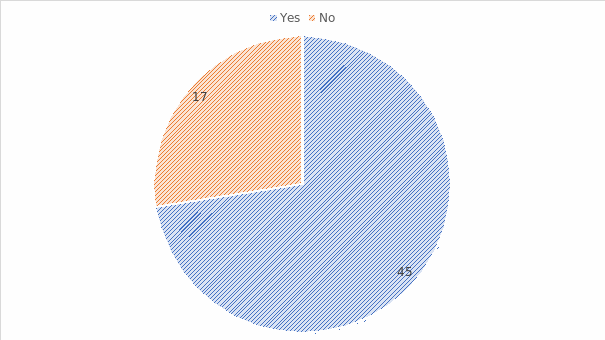
Refuel’s Staff Quality of Customer Service
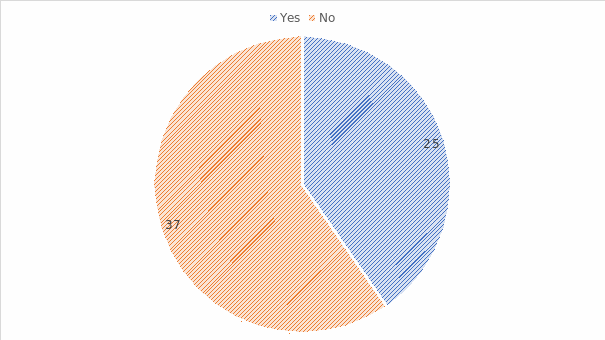
Prices
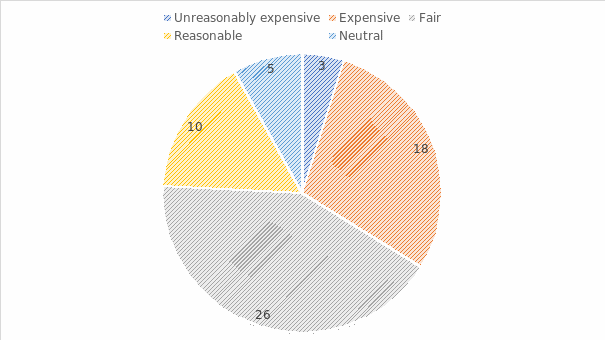
Awareness of Refuel Café’ incentives
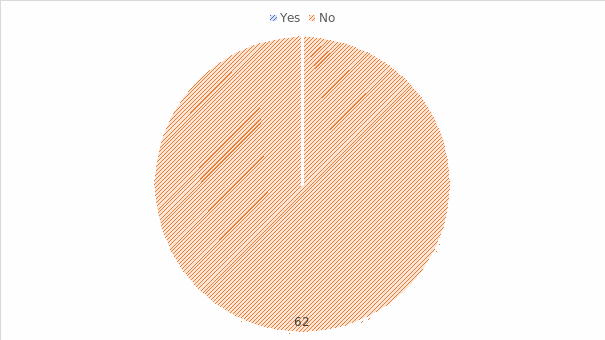
Refuel café would receive more clients if introduced incentives
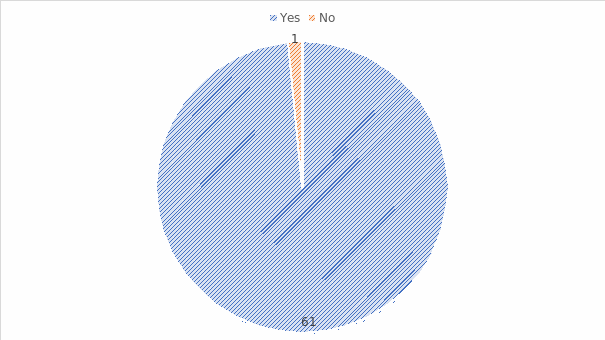
Refuel cafe’s incentives help to attract and retain customers
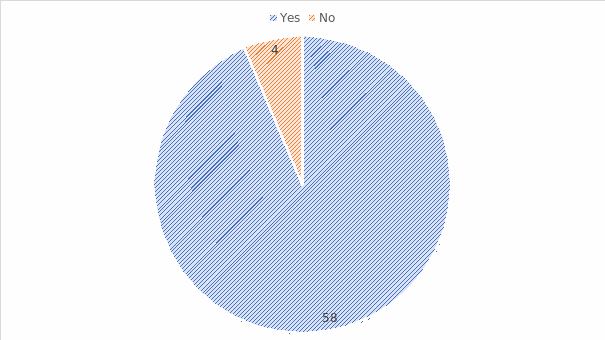
Advertisement
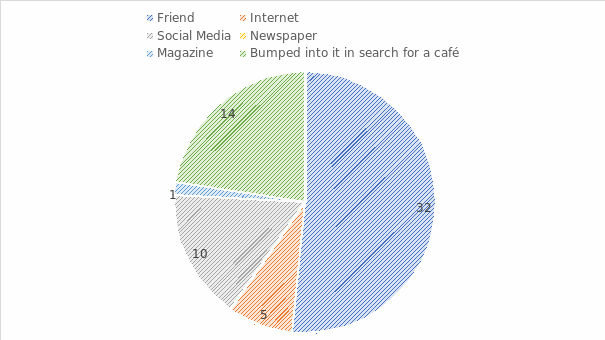
Refuel Café popularity and brand image awareness
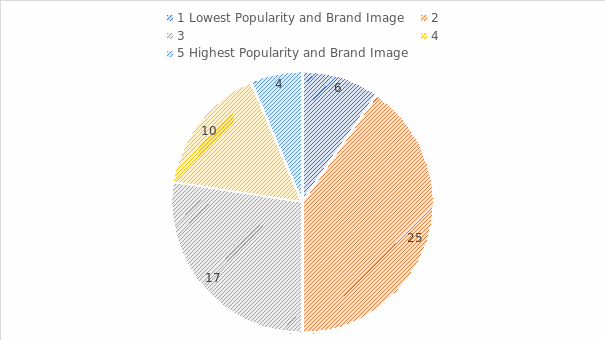
Marketing Strategies
Customers were not aware about these strategies. Hence, there was need to develop unique strategies to increase public awareness. In addition, there was need to train staff on ideal customer service practices. Refuel can create beautiful business cards containing directions to the cafe on the back side of the card. In addition, other than Facebook, the café can use popular sites to advertise itself. Developing signages will also help so that people passing by the café can learn about it, and they might decide to walk in.
Relationships between the number of customers and locality, customer service, incentives, signages, marketing and advertisement, and staff uniform were evident. However, significant associations were found between the number of customers and signages, marketing strategies, advertisement and customer care services.
Conclusion of Findings
The following factors were found to influence the number of clients visiting Refuel Cafe:
- Locality
- Lack of Incentives
- Quality of staff’s customer service
- Lack of numerous and various signage and promotional strategies
- Unprofessional staff uniform
Design Recommendations
Based on the findings and conclusion, it is obvious that Refuel Cafe should incorporate some recommendations to aid in increasing customer satisfaction; hence, attract more customers and have a high customer retention. In reference to the hidden location for new customers, signages in various forms, as indicated in the photographs below, can be used to help in the navigation process towards Refuel Cafe.
Bus-stop Signages
These will indicate the location of Refuel Café location and the distance, for example, 100m walk from a particular bus-stop. In addition, these kinds of signages will show examples of delicacies and services provided in the cafe, including highlights of special and terrific dishes and offers.

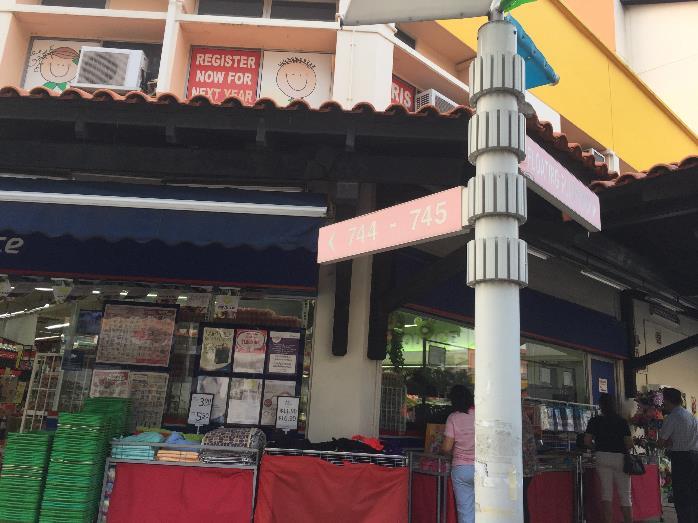
Roundabout signage
The photograph above shows a signage that would be used especially on a roundabout to give directions of Refuel cafe.
Floor Signages
Posts can be designed like footsteps and pasted on the floor leading to Refuel Café.

Alternatively, the cafe can use public boards to sell the cafe. The management of Refuel cafe can design a colourful brochure and place it on a public board as shown below:
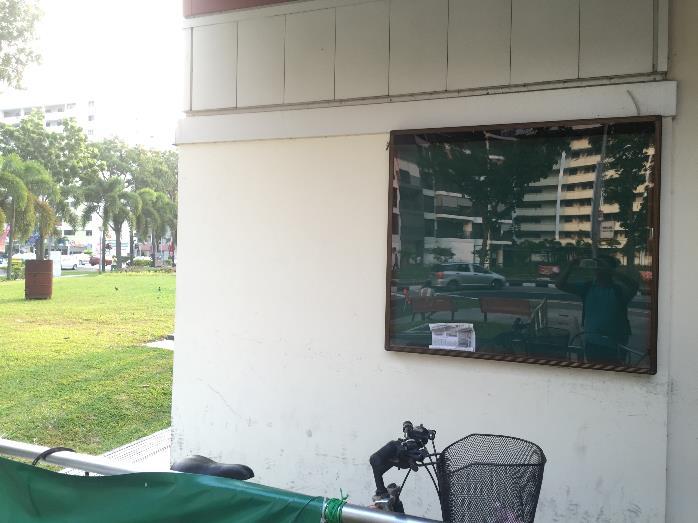
Refuel cafe could also design a large billboard and place it in a bus stop due to the large flow of people here. The billboard can include photographs of attractive dishes, special offers, some positive comments from customers, and the distance from that particular board, for instance, the cafe can point out “You will enjoy all this only 200 km from here at the new Refuel Cafe; looking forward to serving you!”

Uniform design
The cafe should revamp the aprons so that they display Refuel’s logo. In addition, caps should be introduced and every staff should have a name tag.
Layout design
In order to address the inconsistencies of flow of clients, the cafe can create a strategy of offering certain meals at different prices at different times. In addition, the cafe can introduce delivery services or take-ways to avoid overcrowding of the cafe.
Incentives
It is illogical to offer many incentives given the fact that the cafe tries to lower its prices. However, extra services like special delivery and free wifi can be used as special offers. In addition, every time the client is introducing a new dish, it can be offered at a half the ideal price for the first time in an attempt to get feedbacks from customers. On public holidays, the cafe can offer meals at 5% discount until a certain time.
Customer Service
Staff should improve on their communication and social skills.
References
Alcser, K., Antoun, C., Bowers, A., Clemens, J., & Lien, C. (2011). Ethical considerations in surveys. Web.
Baskerville, P. (2012). What’s the Secret to a Successful Coffee Shop? Forbes. Web.
Boston University School of Public Health. (2013). Power and Sample Size Determination. Web.
Google Maps. (2015). Refuel Café. Web.
Griffin, D. (2015). The Effect of Business location to the Business Success. Hearst Newspaper. Web.
HungryGoWhere. (2015). Refuel Café. Web.
Seow, J. (2014). Running Cafes is No Piece of Cake. The Straits Times.
Vaz, S., Falkmer, T., Passmore, A., Parsons, R., & Andreou, P. (2013). The case for using the repeatability coefficient when calculating test-retest reliability. PLoS ONE, 8(9), 1-7. Web.
WaWaWa Bistro by the Reservoir. (2015). Web.